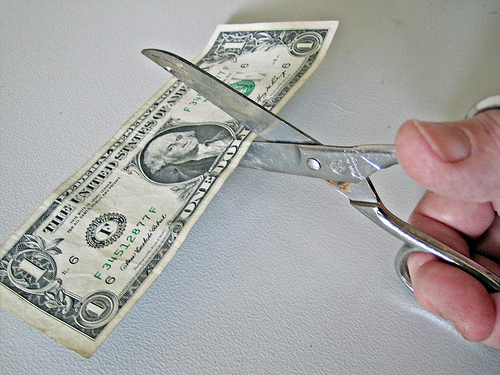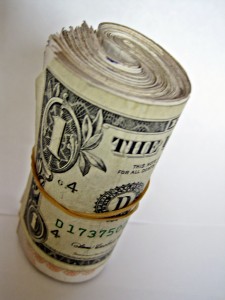How to save money at Whole Foods
If you’re like me and you’ve got a cabinet full of chocolate and all you can think of is how much more you need to buy and try, and you dream that all your out of town trips could center around visiting chocolatiers, and when you bake anything for a loved one you can’t live with yourself unless you dump at least a pound of high quality chocolate into the batter, then you’re probably spending a good chunk of change on the bittersweet stuff.
I have strong opinions regarding the cost of chocolate (and other foods) and on what I believe to be unrealistic expectations for cheapness perpetuated by a broken food system and bizarre prices that are only possible due to poorly directed and heavily lobbied for farm and industry subsidies, multinational corporations run amok, and the exploitation of laborers at many stages of production… PHEW!
On the other hand, food insecurity is a major problem in the US, with about 1 in 7 Americans currently on food stamps. This grave issue goes beyond just cost to availability. Check out the USDA Food Desert Locator, which provides a “spatial overview of low-income neighborhoods with high concentrations of people who are far from a grocery store.” On this map, huge swaths of our country, home to millions of people, are highlighted in pink, meaning food access is extremely limited in those areas.
News on food insecurity is everywhere these days, as farmers struggle to grow their own food while producing large quantities of commodity crops and urban-suburban families suffer from limited access to fresh food options. First Lady Michelle Obama, who has valiantly intervened in numerous food and health related problems in our country, is now directly involved in working to eliminate food insecurity.
Here in Massachusetts, where, on the whole, we are fortunate to have readily available food, I have nonetheless observed the struggles of friends and acquaintances for appropriate food access. A recent Boston Globe article detailed one type of grueling local food scarcity amongst visitors to food pantries. There is a lot more to say on all of this in subsequent posts. The messy interconnectedness of our global food system sometimes seems enough to drive us all batty. Let it stand for now that the development of solutions to food insecurity problems greatly preoccupies me.
That’s why last weekend, while my Twitter and Facebook feeds erupted with Women’s World Cup excitement, I was equally engrossed in a sporting event of sorts — the Extreme Couponing marathon on TLC. Watching this show positively titillates. It’s like riding a roller coaster or bungee jumping… or legally robbing a supermarket. The short of it: intensely organized people spend dozens of hours finding, cataloging, and calculating coupons, then go to the grocery store where they acquire hundreds of dollars worth of products for nearly free. Watch the show. The extreme couponers are compulsive pennypinching heroes, true pros at gaming food costs! And most of them, as it turns out, were inspired to coupon in the extreme when their own families faced food insecurity.
There are countless blogs and guides online with tips for saving money at supermarkets, drug stores, and big-box stores. Given my own food politics inclinations and my geographic location, I tend to do most of my food shopping at Whole Foods, local family-owned shops, and seasonal farmers markets. I take money saving and frugality seriously, and I love a good bargain as much as the next person.
Whole Foods is still subject to the well known but somewhat unfair and outdated epithet, Whole Paycheck. Its brand is associated with privileged yuppies and gentrification as much as it is with healthy, ethical food. Boston became a part of the debate over these associations and the store’s pricing this year when citizens of the neighborhood of Jamaica Plain spoke out for and against the planned opening of a Whole Foods store there. In response to concerns over pricing, it was found that, in fact, Whole Foods Isn’t That Expensive. And the truth of the matter is, here in Cambridge, Whole Foods is an excellent shopping option, and often, because we are lucky to have three locations within the city’s borders, it is the most convenient one for people of diverse income levels.
Extreme couponing is not a realistic goal for most people, nor will it ever be THE solution to food insecurity problems. Yet the skills that extreme couponers have and their heightened awareness surrounding shopping and budgeting is something that we can all benefit from. Recently, in the interest of improving my own food shopping skills, I challenged myself to learn how to save serious cash when shopping at Whole Foods. So, no matter what drives you to coupon, whether its to deal with the very real problem of food insecurity, because you want to save or donate money, or because you’ve got a tongue-in-cheek desire to accommodate a chocolate buying habit, I hope that the information below will prove useful.
According to my preliminary calculations, I should be able to save anywhere from $25 or more on my Whole Foods grocery bill next week.
Here’s what I’ve learned:
Tips for saving money at Whole Foods
- Buy local, seasonal produce and save. While this isn’t a hard and fast rule, I often find that local, seasonal fruits and vegetables are less costly than imported, out of season ones. I buy organic produce almost exclusively now, for the simple reason that pesticides are harmful for farm workers, the environment, and me. Plus, my experience has been that organic produce most often tastes much better. Admittedly, organic produce is sometimes more expensive than non-organic, but well, healing people and the environment is very expensive, and this is a cost-benefit choice that I am fortunate enough to make.
- Consult The Whole Deal Value Guide, which is available by email, online, or in stores. The Whole Deal is published throughout the year. It includes the following money saving options: dozens of printable coupons, a list of Sure Deals (seasonal sale items), Three Under $3 (three kitchen staples for under $3 each), Budget Meal suggestions, and Budget Friendly Recipes. Numerous blogs also take on the challenge of budget friendly meal planning.
- Download the PDF file of Weekly Buys for your local store. Do this by going to the Whole Foods main website. On the home page, you will see a highlighted box with the text “What’s On Sale?” Input your state and choose your local store, then click download. Note: In addition to the Weekly Buys, there is an in store publication called “Weekender” with last-minute specials for Friday, Saturday, and Sunday. My local Whole Foods offers significant discounts on *at least* 50 items each week.
- When you’re in the store, look around and ask. Sometimes there are in store specials like Madness Sales or One Day Sales that you won’t necessarily know about unless you run across them at the store. You can also stop by the Customer Service Desk and ask questions about deals. The staff at my local store are wonderful and very helpful; it is always a pleasure to speak with them.
- Volume discounts. If you buy a full case or a large amount of one of your much used items, you might be eligible for a volume discount from the store (sometimes as much as 10 or 20% off). Ask at the Customer Service Desk for more information.
- Bulk bins. The bulk section of any Whole Foods store is easily distinguishable by its large clear bins filled with grains, dried beans, dried fruits, nuts, candies, and more. You self select your quantity, use minimal packaging, and store things without refrigeration, making this an ecofriendly and economical choice.
- Buy “generic” from the wide range of Whole Foods’ own 365 Everyday Value brand. This post from Apartment Therapy discusses the cost saving possibility of many of the high quality 365 products.
- Sign up for all the Whole Foods email newsletters, which contain information about coupons, sales, and more. (Bonus: If you sign up right now, you can enter to win a $50 Gift Card.)
- Find manufacturer’s coupons for your favorite brands and use them at Whole Foods. There are many ways to find these coupons and they are elaborated in wonderful detail on many couponing blogs. A few of my favorite spots are: 1) You can check the websites and sign up for newsletters individually for your favorite products. Here are a couple of starter lists with links to common brands: Best Organic Food Coupons, Frugal Living. I also recommend following your favorite brands on Twitter and “Like”-ing them on Facebook for real time updates on deals. 2) There are many excellent blogs devoted to couponing that link to coupons for organic and natural products. Check out Mambo Sprouts and Thrifty Mama to start. Also be sure to follow them on Twitter and Facebook, sign up for their newsletters, etc. 3) Check out your local newspaper coupon circulars, which are typically published once or twice a week.
- Follow Whole Foods on Twitter and Facebook. Also follow your local Whole Foods (as well as your favorite family-owned shops and farmers markets).
- Many of the publications, both digital and otherwise (e.g. Delicious Living magazine), from newhope360 offer coupons.
Tips on organizing all of these deal types
- Print out coupons that require printing when you find them. File them into a binder or plastic box. Consider organizing them by expiration date or by product name/type, whatever makes more sense for you. Don’t be embarrassed about bringing the whole thing with you to the store. Just tell yourself: it’s more embarrassing to miss good deals!
- Use your RSS feed, Google Reader, or another tool to read and organize coupon blog posts all in one spot.
- Set up categories in your email to make coupon related emails quick and easy to sort. I use Gmail Labels.
- Set up organizational lists on Twitter, groups on Facebook, or eventually circles on Google+ with your favorite feeds.
- I use the excellent tool Evernote for taking notes and archiving all of my couponing lists and links — it works online and syncs directly to my Android phone. Very handy for organizing shopping expeditions!
- Explore apps for your smartphone. There are a number of grocery, shopping, listmaking, and coupon apps out there. I have had good luck so far with the Android apps The Coupons App and GeoQpons. I use them mostly for retail shopping like clothing and home decor.
- Couple all of the above with a good calendar app that syncs with your smartphone and you can keep track of those tricky sales timelines and expiration dates!
Happy saving, chocoholics!
comments
Leave a Reply




